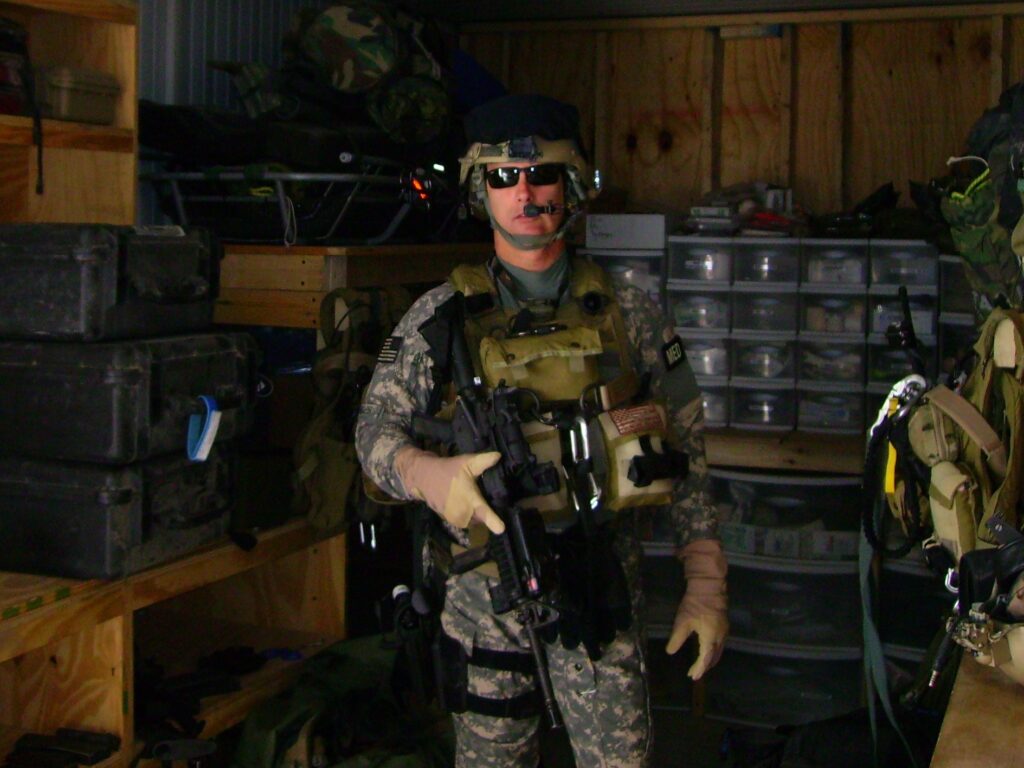To the moon and Mars, with less difficulties

Dr. Shean Phelps’ curriculum vitae reads more like an action-and-adventure thriller than a resumé, topping out at 19 pages full of medals, awards, publications, patents, travel, lectures, research and development — plus a Top Secret clearance. But the most alluring section is his professional education history, where the story of a commitment to public health begins at Campbell University.
While serving in the Army as a senior enlisted Green Beret, Phelps crossed paths with Campbell University ROTC recruiter Maj. Bill Bickle. Through the Army’s Green to Gold program, Phelps realized his dream of becoming a doctor was not as far-fetched as he thought.
There was just one problem: after he enrolled, he discovered he was too old to qualify for the program’s full scholarship amount. The solution? Complete 18 to 21 hours each semester and pick up a full-time job as a waiter to afford tuition and complete the degree as fast as possible.
While meeting the full-time demands of the Army, Campbell and a second job would have been enough to drive most to giving up, Phelps credits these challenges for preparing him to work harder than ever before while building an excellent foundation for his eventual medical studies and career beyond graduation.
“I’ve done many interesting things and faced many challenges, but among all of those accomplishments, failures, challenges and experiences, one that will always stick with me is my time at Campbell University,” he says. “I learned to be a good and curious thinker and doer. One who puts my God-given and Campbell-polished talents to work doing and spreading as much goodness, kindness and practical, usable effort into the world as I can. It was at Campbell where I truly learned my potential to be a force for good and decent change in the world.”
Phelps commends biology faculty members Dr. Claudia Williams and Dr. Steven Everhart not only for providing him guidance, mentorship and encouragement, but also for creating an environment of profound inclusion.
“My time at Campbell shaped who I am as much as anything else or any other experience in my brief existence on this planet.”
Throughout Phelps’ career, there’s been no shortage of experiences and challenges that presented opportunities for him to lead with purpose. He’s been wounded and deserted thousands of miles away from civilization and survived nearly two dozen combat deployments. After medical school, residency and an initial assignment as a clinic commander in northern Germany, his first day back as a Green Beret officer was as the lead Special Operations physician in Europe on Sept. 11, 2001. He provided direct medical support to the forward-deployed Special Operations units in Europe, leading medical teams on classified combat operations in Middle East Africa and Southwestern Asia. While participating in an international rescue operation in the Ivory Coast, he delivered a baby in the middle of the night in the back of a French Foreign Legion truck during a mortar attack while simultaneously treating a rebel soldier for gunshot wounds. He’s also helped to capture indicted war criminals and Al Qaeda terrorist cell leaders.
All of these experiences prepared him for the next stage of his career, where his focus turned to research and development for the benefit of soldiers and, eventually, astronauts.
Of all of his accomplishments, Phelps says he is most proud of his two grown and independent children. Next would be becoming a meaningful example of being “a force of good and decent change in the world.” One of his significant contributions is the Warrior Injury Assessment Manikin (WIAMan) project, which he conceptualized and initiated in 2007.
“We identified the need to develop a new anthropomorphic test device [crash test dummy] to explore combat injuries related to improvised explosive devices,” Phelps says. “Then we developed injury prevention technologies such as combat vehicles, helmets and protective armor systems, and blast event identification technologies.”
Phelps says the project resulted in the production of a new class of ATD called a “blast test dummy,” which represented the first major update to ATD technology in nearly 45 years.
After ending his career with the Army in 2011, Phelps’ spent the next 10 years honing his skills as a physician and a researcher, working five years at the Georgia Tech Research Institute as a research scientist. In early 2021, he received the phone call that led him to Johnson Space Center in Houston to help design landing and health and wellness systems for NASA’s human space flight program.
Phelps was recruited to act as the associate scientist for the Exploration Medical Capability element under NASA’s Human Research Project, working with other physician-scientists and NASA program managers to expand the capabilities of human spaceflight. This position is performed under the $10.1 billion Human Health and Performance Contract and is intended to help the ExMC element leadership and its laboratories determine and develop the required capabilities needed for the health and performance systems for future human exploration missions.
Phelps also serves as a subject matter expert on NASA designated areas of risk to future human spaceflight that includes everything from bone health of astronauts to the effects of lunar and martian dust on the human body.
Almost 30 years post-graduation, Phelps has “landed” at the ultimate curious thinker’s workplace. He’s leading with purpose, using his talents to be a force for good on Earth and beyond. And perhaps he is putting his spin on the Campbell motto “Ad Astra per Aspera” or “to the stars through difficulties.”
To the moon — and Mars — with less difficulty.
